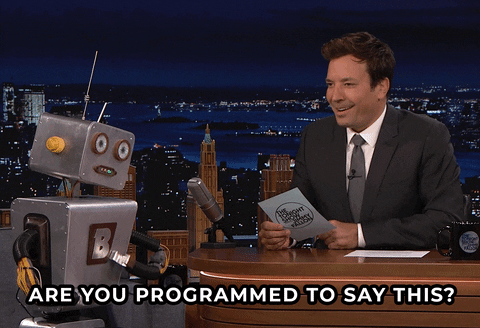When you finally get visibility into Funnel Conversion Rates in Salesforce, you see what parts of your funnel are efficient, bottlenecked, leaking, or lacking a clear owner. You may also be wondering, “Are these rates… good?” These are the B2B funnel conversion benchmarks I expect.
>> Related: It’s Time to Abandon TQL and SAL in Your Lead Funnel <<
In this post:
MQL to SAL should be verrrry high
MQL-to-Sales Accepted Lead basically measures if Sales looks at a lead and says, “Yes, I agree, I’m going to call/email this person. This is worth my time.” Your Sales Acceptance rate should be >80%.
If you’re seeing MQL to SAL rates <80%, you’ve got a problem. You’re qualifying a lot of leads that Sales think are worthless. Sources of the problem could be:
- Inflated lead scores for flimsy activity. For example, MQLing people because they clicked emails.
- Missing data quality controls. Junk emails, junk phone numbers, junk first or last names… they should all be stripped out by your marketing automation platform before a lead gets passed to Sales.
- A demographic fit that’s too broad. Chances are certain industries, geographies, company sizes, etc. are bad fits, but are still flowing through. If Sales can tell by looking at a lead that it’s not worth their time to pick up the phone, don’t MQL them in the first place.
FWIW this is the only conversion rate that can be “too high.” If you’re seeing 98% SAL rates, your MQL threshold might be too restrictive. Take a look at your Engaged leads that don’t quite meet your MQL threshold, because there could be some legitimate leads stuck there, and you’re leaving money on the table by not sending them to Sales. This is a major reason I tinker with lead scoring every quarter.

SAL to Meeting Scheduled will be shockingly low
Brace yourself… the benchmark for SAL-to-Meeting-Scheduled is just 5-15%.
That’s because a high quality cold call list has a call-to-connect ratio of just 10%. If you call 100 people, you’re probably going to get ~10 connects. That’s a good list quality. And turning half of those conversations into meetings is totally acceptable.
If you’re seeing less than 5%, I’d bet:
- You’re MQLing folks that are doing general research and not in an active buying cycle. It’s worth checking: do Leads stalled in SAL share certain behaviors or content titles? (i.e. constant webinar attendance or downloading analyst reports) If so, you can depreciate those behavior scores.
- You’re not hitting the SLA. For example, the team might not be contacting them in <24 hours. Or you’re emailing everyone quickly, but not contacting them deeply (i.e. multiple times over email and phone). If SALs are falling through the cracks, SLA alerts in Salesforce can be a godsend.
- Alternatively, this might be a “people problem.” Look at your conversion rate on an individual level to see if poor conversions are isolated to specific BDRs or AEs, for whom personal intervention/training can help turn things around.
I’d be remiss if I didn’t also acknowledge that the pandemic has had a disastrous effect on this funnel stage in particular. Our databases are full of office numbers and… very few people are in the office. Across the board I’m seeing fewer meetings because it’s just harder to get in touch with people.
And by the way, if you’re seeing a SAL-to-Meeting-Scheduled rate over 15%, give your BDR manager a raise! It’s honestly very impressive.

Meeting Scheduled to Meeting Held is all about ownership
Meeting-Scheduled-to-Meeting-Held shows how many of your people actually show up to the meetings. I want this to be at least 50% – a leaky pipe at this stage is pretty inexcusable. These folks already agreed to a meeting… don’t let them die on the vine due to poor execution.
If your Meeting Held rate is <50%…
- Who is responsible for rescheduling meetings? I recommend BDRs own it, and a recent client increased Meetings Held 21% month over month by doing this!
- Scrutinize how you remind prospects about the meeting, and how often. I’ve seen dramatic improvements by simply updating the calendar item so it feels personal and valuable.
- Is this another “people problem”? Look at your conversion rate on an individual level and interview reps with great numbers. Chances are they’re adding personal touches that you could systemize and lift all boats.

Meeting Held to Opportunity – is it lumpy or consistent?
Meeting-Held-to-Opportunity should also be 50-70%. If you’re seeing lower numbers, get ready because this is a complicated problem.
If the conversion rates are lumpy across reps:
- Organize a role play with reps and see if folks are deviating from the script, adding compelling flourishes, or need additional training. Put your best reps (according to the data, not seniority!) first so the rest of the team can learn from them.
- Certain reps might be over-selective about BANT. Clearly define what Budget, Authority, Need, and Timing mean for your business (i.e. Timing could be “next 12 months”) and reinforce it constantly.
If the conversion rates are consistently low across all of your sales reps:
- Scrutinize how Opportunities are created, and who owns creating them. I see better conversation rates when BDRs input the BANT data in Salesforce (via dropdowns on the Opportunity page layout). And I see even better rates when Sales Ops (yes, you read that right) creates Opportunities automatically when the BANT criteria are met.
- Your pitch deck could need some help. Scrutinize the deck, role play with reps, and see if your value prop needs a tune-up.
- Your BANT definitions might be overly-selective. For example, are you disqualifying genuine influencers because the don’t meet a narrow definition of Authority? Need is usually the only criteria without any wiggle room.
- You might not have a product market fit with your ICP or persona. These are some of the thorniest conversations to have internally, but your Meeting-Held-to-Opportunity rate is effectively market research. Experiment until you get it right, and take those learnings back to Marketing to improve their demand gen efforts.

Opportunity to Close is not your problem
Opportunity-to-Close rates should be >20%, but they vary widely depending on the industry, product offering, and price point. It’s pretty painful to be a marketer when rates are <20%. There’s honestly not a ton Marketing can do to help, but it puts exponential pressure on the top of the funnel (I’ve been there, it’s no fun).
Instead of pointing fingers at reps, Sales Ops, or the exec team, give Sales visibility into their Open Opportunities. Most account reviews are unstructured and anecdotal. Build a dashboard that tracks stage durations and next steps, like this (click to expand):
Encourage the sales managers to use this as the backbone behind their weekly 1:1s with reps. If nothing else, it will focus their efforts on working Opportunities instead of pointing fingers at Marketing to generate more Leads.
With full visibility into your conversion rates, and now a clearer sense of normal funnel conversion benchmarks, you’ll be able to spot bottlenecks, poor ownership, and/or leaks in your funnel.





